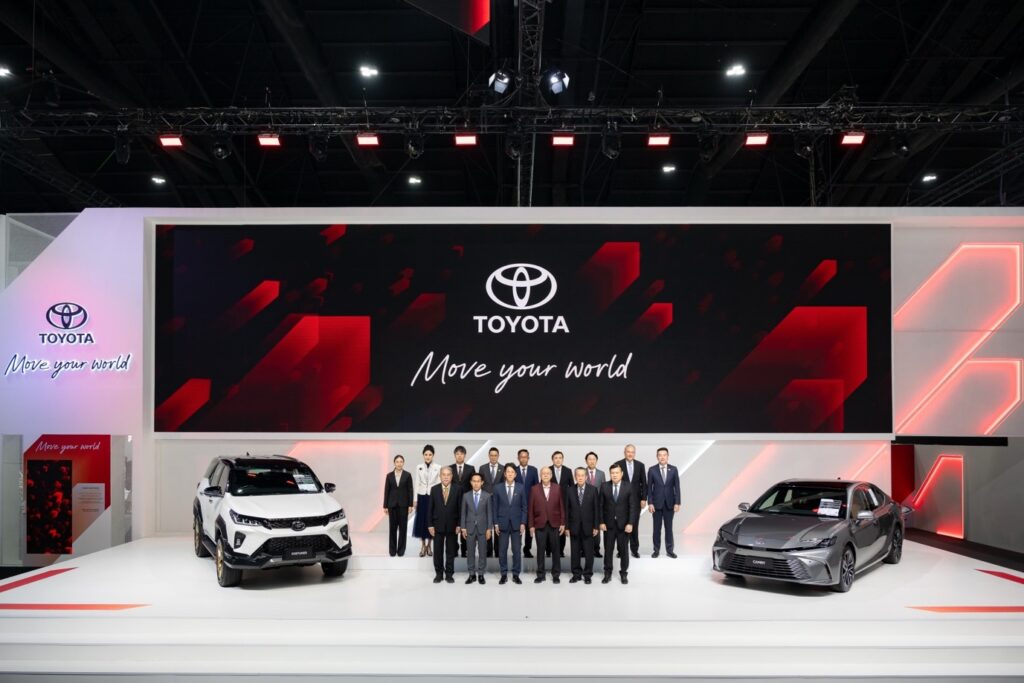Toyota, one of the world’s most recognized automotive brands, has consistently set benchmarks for quality, innovation, and sustainability. Founded in 1937, the company has evolved from a modest Japanese automaker into a global symbol of engineering excellence. This article delves deep into Toyota’s history, values, innovations, and its strategic vision for the future.
The Origins of Toyota
From Looms to Engines
Toyota’s story begins not with cars, but with looms. Sakichi Toyoda, the company’s founder, was an inventor who revolutionized the textile industry in Japan by creating an automatic loom in the early 20th century. His son, Kiichiro Toyoda, was inspired by developments in the automobile industry abroad and established Toyota Motor Corporation in 1937.
What makes Toyo-ta unique from its very inception is the belief in kaizen—continuous improvement—and the ability to shift industries while keeping innovation at the core.
Philosophy & Culture
The Toyota Way
Toyo-ta’s organizational culture is built around two main pillars:
This is known as The Toyota Way, a philosophy that has inspired management strategies and lean manufacturing systems worldwide.
Just-In-Time & Lean Manufacturing
Toyo–ta’s lean manufacturing and Just-In-Time (JIT) production system revolutionized global production standards. By eliminating waste and optimizing workflows, Toyota has been able to deliver high-quality products efficiently, setting a gold standard in manufacturing.
Global Expansion
Becoming a Global Giant
After launching its first passenger car, the Toyo-ta AA, the company steadily expanded. By the 1960s, it was exporting vehicles globally, including the iconic Toyota Corolla, which went on to become one of the best-selling cars of all time.
Toyota’s growth accelerated in the 1980s and 1990s, particularly in North America, where it established manufacturing plants and became known for reliability and fuel efficiency.
Key Global Milestones:
1984: Joint venture with General Motors—NUMMI (New United Motor Manufacturing, Inc.)1989: Launch of the luxury Lexus brand2008: Overtook General Motors as the world’s largest automaker (by production)
Innovation & Technology
Pioneering Hybrid Technology
In 1997, Toyo-ta launched the Prius, the world’s first mass-produced hybrid vehicle. It was a game-changer, introducing millions to hybrid technology and significantly reducing carbon emissions. This positioned Toyota as a leader in eco-friendly mobility long before it became a global concern.
Advancing Hydrogen & EVs
Toyo-ta hasn’t stopped at hybrids. It’s also pioneering hydrogen fuel cell technology, with the Toyota Mirai, and expanding its battery-electric vehicle (BEV) lineup. While competitors focused solely on EVs, Toyota diversified, investing in:
Toyo-ta’s cautious, yet forward-thinking approach aims to provide multi-pathway solutions to meet global energy and infrastructure diversity.
Sustainability & Environmental Impact
Environmental Goals
Toyota’s Environmental Challenge 2050 includes six ambitious goals, such as:
Reducing CO₂ emissions from new vehicles by 90%
Zero carbon emissions at manufacturing plantsPromoting recycling and sustainable resource use
Through innovations like the Hybrid Synergy Drive and solid-state battery research, Toyota is positioning itself to lead in the era of carbon-neutral transportation.
Toyota in Motorsports
Racing Heritage
Toyota has long been active in motorsports, using it as a testbed for innovation and performance.
Key highlights:
WRC (World Rally Championship): Multiple championships24 Hours of Le Mans: Toyota won with its hybrid TS050NASCAR & Formula Drift: Dominant performance in North America
This not only showcases engineering excellence but also feeds performance insights back into consumer vehicles.
7. Toyota’s Smart Mobility Vision
Beyond Cars
Toyo-ta sees the future as “mobility for all.” This goes beyond just building cars—it’s about solving transportation challenges with connected, autonomous, shared, and electrified (CASE) technologies.
Key Innovations:
-
Woven City: A fully connected prototype city near Mount Fuji to test AI, robotics, and hydrogen tech
-
e-Palette: Autonomous shuttle vehicles designed for urban mobility and logistics
-
Mobility-as-a-Service (MaaS): Toyota is developing integrated services that combine vehicle access with digital platforms.
Challenges & Criticisms
While Toyota is often praised, it’s not without its share of challenges:
Late EV Adoption: Critics argue Toyota was too slow in scaling up its BEV production, focusing heavily on hybrids instead.2020s Chip Shortages: Like many automakers, Toyota faced production issues due to global semiconductor shortages.Safety Recalls: Large recalls in the 2010s affected public trust, though Toyota responded swiftly with enhanced safety protocols.
Despite these, Toyota remains a brand that learns, adapts, and improves.
What’s Next for Toyota?
Looking forward, Toyota is investing heavily in:
Solid-state batteries: Promising faster charging and higher energy densityCarbon-neutral manufacturing: Targeting zero emissions across all factoriesAutonomous driving: Enhancing safety and mobility access through advanced driver-assist technologies
Toyota aims not just to sell cars, but to become a mobility company, offering solutions for aging populations, urban logistics, and eco-sustainable transportation.
Conclusion
Toyota’s journey from a textile loom to a leader in global mobility is a testament to its relentless focus on quality, innovation, and sustainability. While the automotive landscape continues to evolve with electrification and digitalization, Toyota’s balanced approach—honoring its legacy while embracing the future—ensures it remains a pivotal force in shaping how the world moves.

